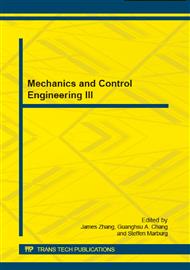p.180
p.186
p.190
p.195
p.199
p.204
p.211
p.215
p.219
Multi-Index Nonlinear Coordinated Control of TCBR and Hydro-Generator Excitation
Abstract:
As a new FACTS device, thyristor controlled braking resistor (TCBR) is one of the effective devices to enhance transient stability of generator. In this paper, a coordinated controller for TCBR and hydro-generator excitation system with the multi-index nonlinear coordinate control method based differential geometry theory is proposed. By means of Hartman-Grobman theorem, differential geometry multi-index nonlinear control (DGMINC) design method can reassign the closed-loop system eigenvalues of linear approximate system to the nonlinear system via appropriately selecting output function parameter matrix. Therefore, the system can get good control performance. The simulation results show that TCBR and generator excitation system controlled by this coordinate control strategy can decrease the generator acceleration area rapidly when the severe fault occurred and increase deceleration area significantly after the fault is cleared. So that, power system transient stability limitation improved significantly.
Info:
Periodical:
Pages:
199-203
Citation:
Online since:
December 2014
Authors:
Price:
Сopyright:
© 2015 Trans Tech Publications Ltd. All Rights Reserved
Share:
Citation:


